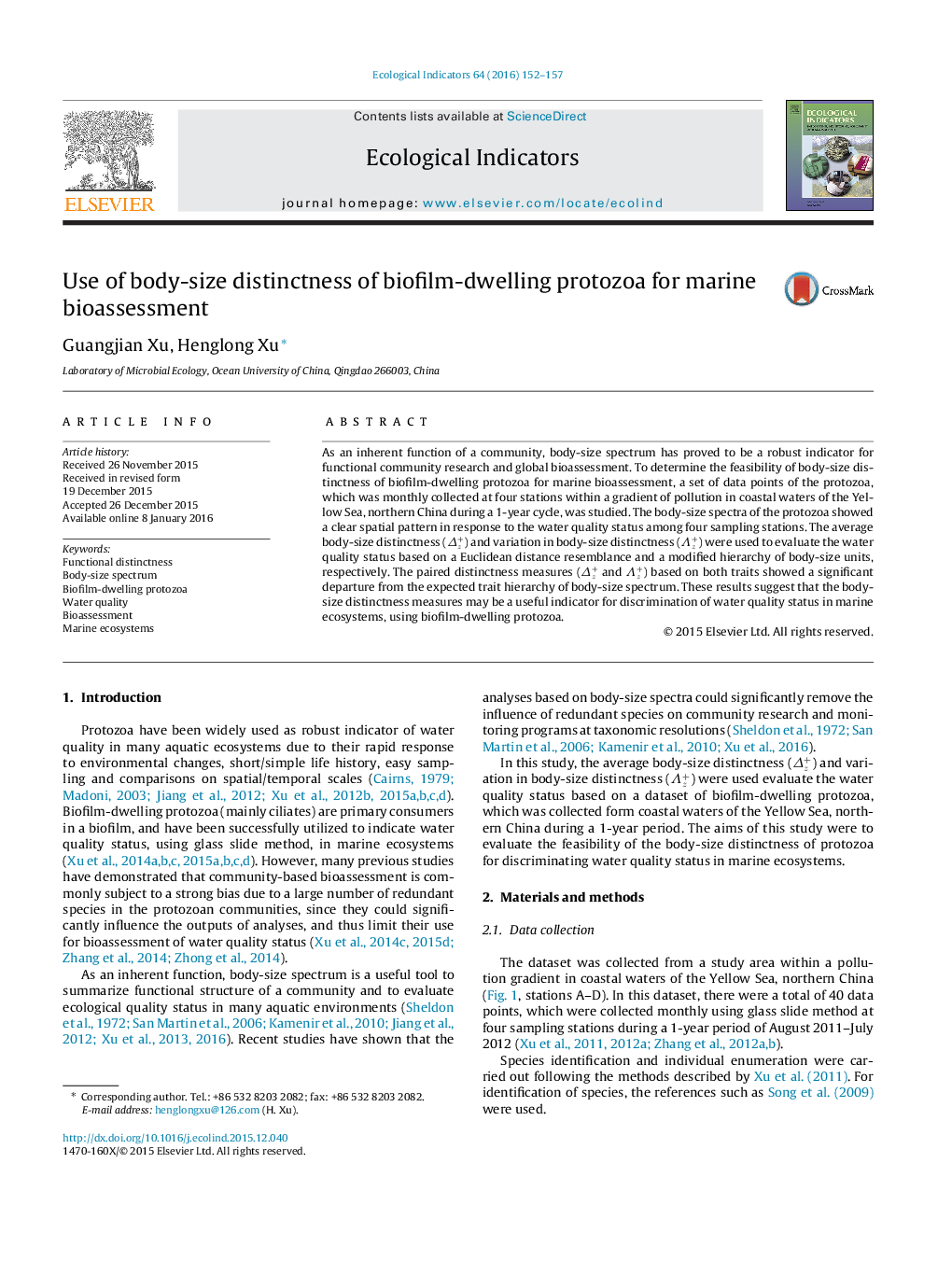| Article ID | Journal | Published Year | Pages | File Type |
|---|---|---|---|---|
| 4372945 | Ecological Indicators | 2016 | 6 Pages |
•The body-size distinctness shows a significant correlation with water quality status.•The paired distinctness indices may reflect the departure from the expected body-size spectrum.•The modified trait hierarchy of body-size units may be a potential surrogate of original ones.•The body-size distinctness measures are of insensitivity to sampling effort.•The body-size distinctness measures may be used as a potential bioindicator of water quality.
As an inherent function of a community, body-size spectrum has proved to be a robust indicator for functional community research and global bioassessment. To determine the feasibility of body-size distinctness of biofilm-dwelling protozoa for marine bioassessment, a set of data points of the protozoa, which was monthly collected at four stations within a gradient of pollution in coastal waters of the Yellow Sea, northern China during a 1-year cycle, was studied. The body-size spectra of the protozoa showed a clear spatial pattern in response to the water quality status among four sampling stations. The average body-size distinctness (Δz+) and variation in body-size distinctness (Λz+) were used to evaluate the water quality status based on a Euclidean distance resemblance and a modified hierarchy of body-size units, respectively. The paired distinctness measures (Δz+ and Λz+) based on both traits showed a significant departure from the expected trait hierarchy of body-size spectrum. These results suggest that the body-size distinctness measures may be a useful indicator for discrimination of water quality status in marine ecosystems, using biofilm-dwelling protozoa.
